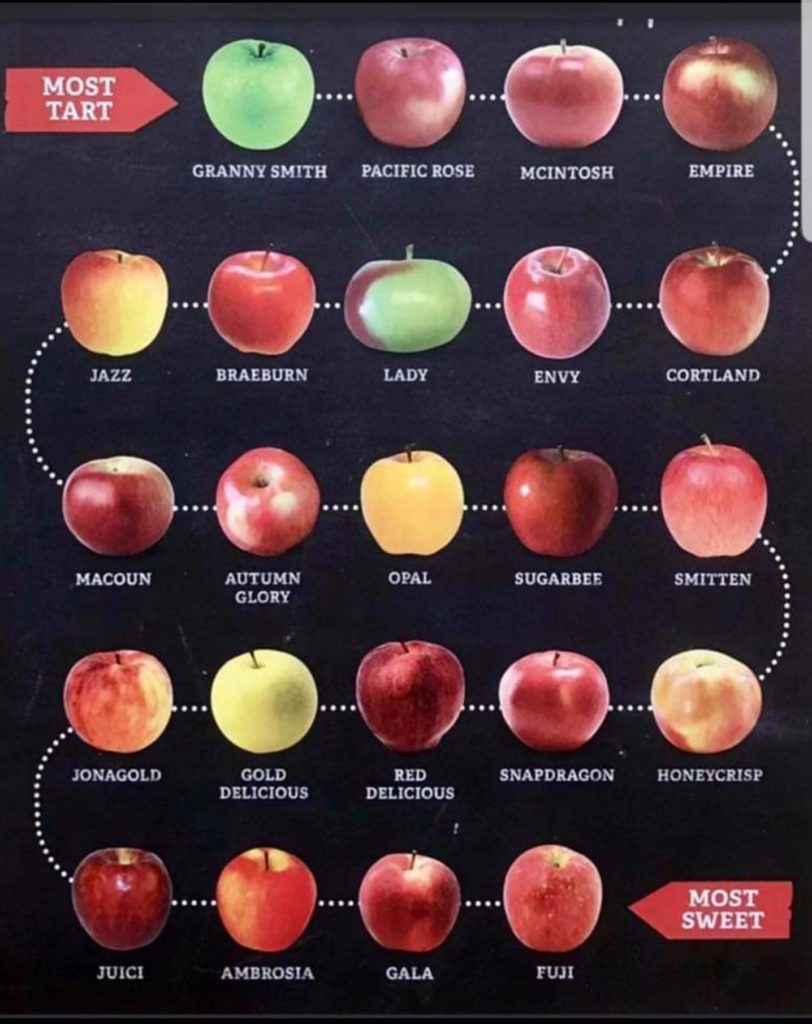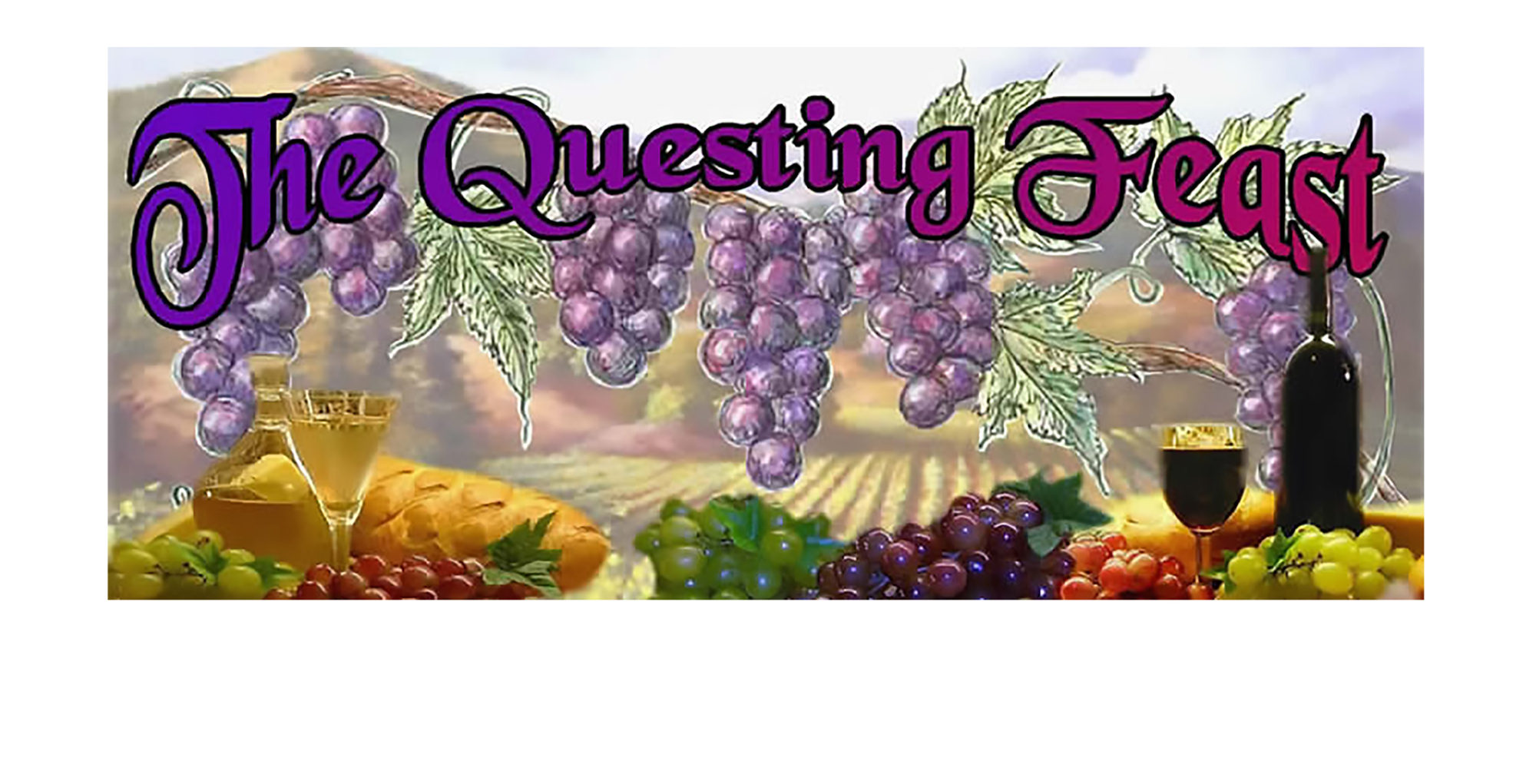by Geraldine Duncann
This planet, which we have the great good fortune to inhabit, (even though at present, we don’t seem to be taking very good care of it), is blessed with a plethora fruit. Peaches, plums, nectarines, apricots, melons, berries, star fruit, pomegranates, persimmons, pineapples, guava, papaya, bananas, mangos and more.
Delicious and delightful as they all are, is there a one of them that can compare to the simple, old fashion joys of a good apple? Can any fruit compare to the versatility of an apple?
Apple pie is a given, applesauce, of course. Apple crisp, Apple Brown Betty, apple cobbler, apple dumplings, baked apples, apple butter and apple jelly are almost the law. How about “Fried Apples ‘n’ Onions,” as described by Laura_Ingalls_Wilder in her “Little House,” books.
Autumn is Apple time. I am a great big fan of fruit, all the glorious array of fruit that Ma Nature has blessed us with, but when push comes to shove, can anything beat a basic, good, sweet, crisp and crunchy apple?
Apples have been a part of the American diet, history, culture and folk lore since the first European colonists arrived, bringing with them seeds and grafts from the treasured trees of their homelands. Records from the Massachusetts Bay Co. show that apples were being grown in New England as early as 1630. Archeologists have discovered the charred remains of apples in a Stone Age village in what is now Kazakhstan. The Greeks were growing several varieties of apples by the late 300’s BC. The ancient Romans cultivated them and developed even more varieties, which they introduced throughout their empire.
Pity the poor child who has never climbed a neighbors apple tree to steal the luscious forbidden fruit. What would late summer autumn be without the kitchen filled with the enticing aroma of apples cooking in one form or another? And please be willing to think outside the box. Apples don’t have to stay in a pie or the jelly jar. Apples are perfectly willing to appear on your table in any course. Try an apple and butternut squash soup or an apple and beet salad. How about apple and chicken salad or potato and apple pancakes? Sausage stuffed baked apples make an excellent entree and you can even have apple ice tea.
Apples are an excellent source of both soluble and insoluble fiber. Soluble fiber such as the pectin in apples, actually helps to prevent cholesterol buildup in the lining of blood vessel walls, thus reducing the incident of atherosclerosis and heart disease. The insoluble fiber in apples provides bulk in the intestinal tract, holding water to cleanse and move food quickly through the digestive system .
When eating apples raw, they are far better for you, and better tasting, if eaten with the skin on. Almost half of the vitamin C content is just underneath the skin. Eating the skin also increases insoluble fiber content. Most of an apple’s fragrance cells are also concentrated in the skin and as they ripen, the skin cells develop more aroma and flavor.

In the words of Johnny_Appleseed, from the old Disney film by that name,“I thank the Lord for giving me the things I need: the sun and the rain and the apple seed. The Lord is good to me.”
Apples are great both for eating out of hand and for cooking, however I’ll be willing to bet that when it comes to cooking the fruit of the tree of knowledge, that few of you have explored the true extent of the possibilities. Of course you have made apple pies, and perhaps even an apple straddle. Some of you have even made your own apple sauce and you may remember your grandmother making apple butter, however, the apple has far greater versatility than that, as the following list of recipes shows. Try some this autumn. I think you will be very well rewarded for your efforts.
And so, to honor the apple, I offer you more recipes for apples than you ever wanted to see:
Pantry Staples
Putting up your own apples and other produce is so satisfying – looking in your pantry and seeing rows of jars filled with good food you, yourself have prepared and canned. You know exactly what is in the food, and have prepared it with as much or as little salt and sugar as suites your own needs. If you are not already an experienced canner, the USDA Complete Guide to Home Canning is a good place to start.
Salads
- Apple & Beet Salad
- Apple and Fennel Salad
- Apple and Bleu Cheese Coleslaw
- California Chicken & Apple Salad
Soups
Savories
- Fried Apples ‘n’ Onions
- Apple & Potato Pancakes
- Pork & Apple Curry – England
- Sausage Stuffed Baked Apples
Desserts
- Apple Crisp / Apple Brown Betty
- Applesauce Custard Pie
- Bea’s Apple Pie
- Old Fashion Baked Apples
- Farmhouse Apple Cobbler
- Yealmpton Baked Apples
- Fresh Apple Upside-down Cake
- Benjamin Franklin’s Baked Apple Dumplings
- Rustic Apple Pie
Sides and Relishes
Beverages
And if that isn’t enough, here is a link to the Apple Journal’s Apple Varieties to totally boggle your mind as to the staggering number of apple varieties there are.
The following nutritional information is based on one medium apple, (about 2 ½ inches in diameter, fresh, raw and with the skin on:
Calories – 80
Carbohydrate – 21 g
Dietary Fiber – 4 g
Calcium – 10 mg
Sodium – 0
These values will vary depending on the size and type of apple.

